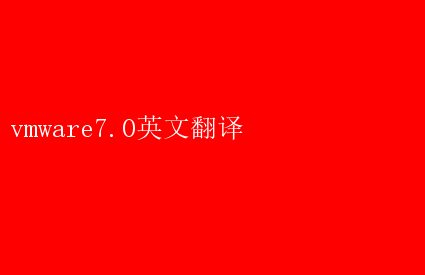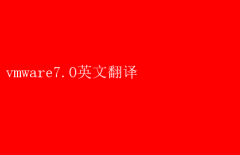
VMware 7.0: Revolutionizing Virtualization with Cutting-EdgeInnovation
In the ever-evolving landscape of technology, few innovations have made as profound an impact as virtualization. Among the pioneers of this transformative technology stands VMware, a name synonymous with reliability, efficiency, and innovation. With the introduction of VMware 7.0, the company has once again set new benchmarks, offering a suite of features and enhancements that push the boundaries of what virtualization can achieve. This article delves into the intricacies of VMware 7.0, translating its key offerings and capabilities into an engaging narrative that underscores its significance in todays digital world.
The Genesis of VMware 7.0
VMware, a subsidiary of Dell Technologies, has been at the forefront of virtualization technology since its inception in 1998. Over the years, it has continually refined and expanded its portfolio, addressing the evolving needs of businesses across diverse industries. VMware 7.0 represents a culmination of years of research, development, and user feedback, resulting in a platform that is not just an upgrade but a quantum leap forward.
Core Competencies and Innovations
Enhanced Performance and Scalability
One of the most compelling aspects of VMware 7.0 is its enhanced performance and scalability. The platform has been optimized to handle larger workloads with greater efficiency, ensuring that businesses can scale their operations seamlessly as they grow. This is particularly crucial in todays fast-paced digital environment, where agility and responsiveness are paramount.
VMware 7.0 introduces advanced memory management features that allow for better utilization of resources. By implementing sophisticated algorithms, the platform can dynamically allocate memory based on real-time demand, reducing waste and improving overall system performance. Additionally, the new storage I/O controls provide enhanced data throughput, ensuring that applications run smoothly even under peak loads.
Improved Security and Compliance
Security remains a top concern for businesses operating in a virtualized environment. VMware 7.0 addresses this by incorporating a robust suite of security features that fortify the virtual infrastructure against potential threats. These include advanced encryption technologies, intrusion detection systems, and automated compliance checking mechanisms.
One of the standout security enhancements in VMware 7.0 is the introduction of vSphere TrustAuthority (vTA). This feature provides a hardware-based root of trust, ensuring that all security policies and controls are enforced at the hardware level. This not only makes it more difficult for attackers to bypass security measures but also simplifies compliance with industry regulations and standards.
Streamlined Management and Automation
In todays complex IT landscapes, managing virtual environments can be a challenging task. VMware 7.0 simplifies this process with a suite of management and automation tools that streamline daily operations and reduce administrative overhead.
The platforms new vSphere Client offers an intuitive and user-friendly interface that consolidates all management tasks into a single pane of glass. This not only makes it easier for administrators to monitor and manage their virtual environments but also enhances collaboration by providing a centralized view of all virtual resources.
Furthermore, VMware 7.0 introduces vSphere with Tanzu, which integrates Kubernetes management directly into the vSphere platform. This allows businesses to deploy and manage containerized applications alongside their traditional virtual machines, facilitating a hybrid approach to application delivery.
Support for Modern Workloads
As businesses increasingly adopt cloud-native architectures and microservices, the need for a virtualization platform that can support these modern workloads has become more pressing. VMware 7.0 rises to this challenge with a range of features that cater to the unique requirements of containerized and cloud-native applications.
The integration of Project Pacific, now known as vSphere with Tanzu, is a prime example of VMwares commitment to supporting modern workloads. This feature enables businesses to run Kubernetes clusters directly on vSphere, leveraging the platforms robust infrastructure and management capabilities to deploy and manage containerized applications with ease.
Cost Efficiency and Resource Optimization
In an era where cost management is critical, VMware 7.0 offers a range of features that help businesses optimize their resource utilization and reduce operational costs. By providing detailed insights into resource consumption and enabling automated scaling based on demand, the platform enables businesses to make informed decisions about their IT investments.
VMware 7.0s enhanced memory and storage management features also contribute to cost efficiency by minimizing waste and maximizing the return on investment in hardware resources. Additionally, the platforms support for hybrid cloud environ

